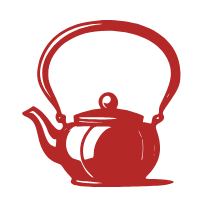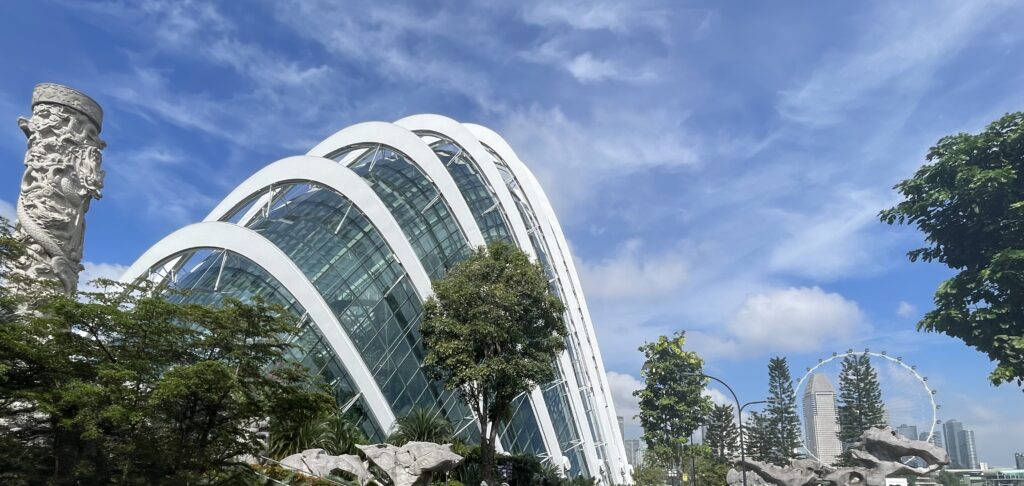An island city-state and trade centre located at the world’s busiest maritime route, Singapore is a meeting point of the West and Asia. This one of the planet’s most important business hubs is visited by millions each year. A traveller to Singapore may quickly notice a phenomenon this city-state is famous for: a harmonious coexistence of different cultures of its ethnically diverse population. Singaporeans are people of diverse descent: Malay, Chinese, Indian, and Eurasian. Thanks to this cultural diversity, the rich and varied culinary scene of Singapore offers a wide range of Asian and Asian-twist culinary experiences. When it comes to tea, this South-East Asia metropolis is a prime tea destination on its own. This article, inspired by the cultural diversity of Singapore, aims to present a range of quality tea experiences you may enjoy while visiting or living in Singapore.
- Pulled tea
Pulled tea or teh tarik, is a traditional beverage of Singapore and Malaysia. This tea used to be served by “teh tarik uncles”, street tea sellers similar to Indian subcontinent chaiwalas, serving black tea with condensed milk. Teh tarik is frothed by pouring it back and forth between containers that looks as if the tea was “pulled” from one to another. Nowadays teh tarik is served from specialised stalls and is an important part of hawker street food culture so characteristic of Singapore. Hawker centres are a must stop for those visiting Singapore. They offer more authentic and reasonably priced dining experience than any worthwhile franchise restaurant could provide. Some of my favourite hawker centres for you to choose from would be:
- My favourite Tekka Centre in Little India, where you may find some truly excellent and authentic food;
- Somewhat touristy yet appreciated by visitors Lau Pa Sat hawker centre, conveniently located in Raffles Place/Downtown area to meet the needs of hungry business travellers, and
- Chinatown Complex hawker centre, along with popular Maxwell Food Centre, minutes away from Chinatown teahouses. You may easily visit either of these two centres during your tea tasting trip to Chinatown.
Teh tarik stalls can be found in many hawker centres across Singapore, but some of them really deserve your attention. You may find more information in an article by Syahirah Mazlan, 10 Best Teh Tarik In Singapore (According To A Teh Tarik Expert). The author describes as the first one the Cafe Tarik (92 Arab St), located in Arab Street area of Kampong Glam neighbourhood, and it is for a good reason. Arguably, it is one of the top places to taste authentic teh tarik in Singapore. Best to visit on a day trip or after lunch in the Arab Street area (famous for its Middle Eastern eateries).
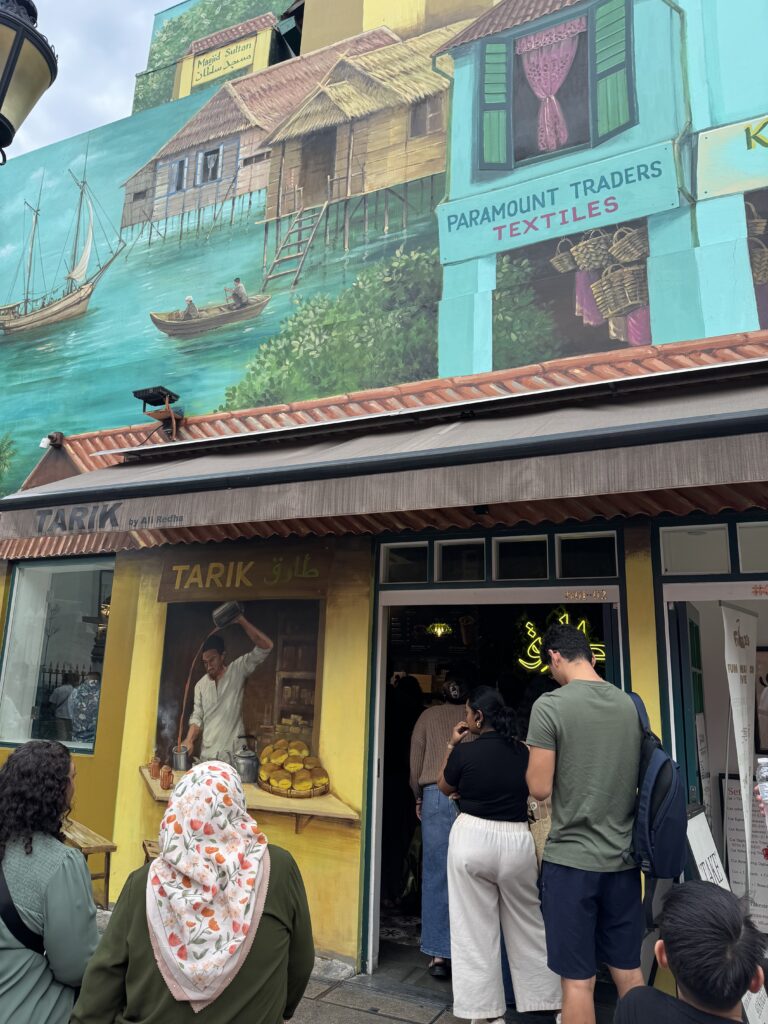
- Masala chai
Indian masala chai enthusiasts will find it served in the majority of north Indian restaurants of the city. Noteworthy, restaurants specialised in south Indian cuisine won’t necessarily have masala chai in their menu as using milk (basic ingredient of any masala chai) is not that common in south Indian cuisine.
- European style afternoon (high) tea
Good news for homesick foreigners, especially those originating from countries with strong Western-type tea culture. European style afternoon tea is quite easy to find across Singapore’s central districts. This originally British type of tea drinking, accompanied by a (not always) light snacks, pastries and cakes, can be found in many cafes of high-end hotels (also check The best tea rooms in Singapore for afternoon tea by Delfina Utomo & Kylie Wong and Weekday woes begone! Nibble on sweet and savoury treats at the best high tea spots in Singapore). Among all these cafes/restaurants serving afternoon tea there is one particular venue located in a very special area of the city, the Downtown. The district was built in the colonial era as an administrative centre. Nowadays it houses major public institutions of Singapore like parliament and Supreme Court. This upscale and classy setting is a perfect place to enjoy high tea in the afternoon. One of the Downtown’s most emblematic buildings is former city hall, currently housing the National Gallery of Singapore. The National Gallery is a home to one of the top places to enjoy high tea with a truly Singaporean twist. At National Kitchen by Violet Oon (1 St Andrew’s Rd, National Gallery), the unparalleled high tea experience will offer you a glimpse into Peranakan (Nyonya) cuisine, stemming from Malay, Indonesian and Chinese approaches to cooking and seasoning.
Combined with a British concept of afternoon tea, it creates a truly Singaporean eclectic experience. After your afternoon tea stop, you may visit the National Gallery or the nearby Museum of Asian Civilisations, with a vast collection of oriental art on display.
- Chinese tea
Chinese, being the biggest ethnic group of Singapore, brought with them a refined and authentic Chinese tea culture. To tealovers’ enjoyment, it makes access to quality tea easier than in many other busy cities across the world. Singapore is dotted with places where you can taste and buy some quality loose leaf tea as well as all kinds of tea accessories meant to serve tea in a traditional Chinese way.
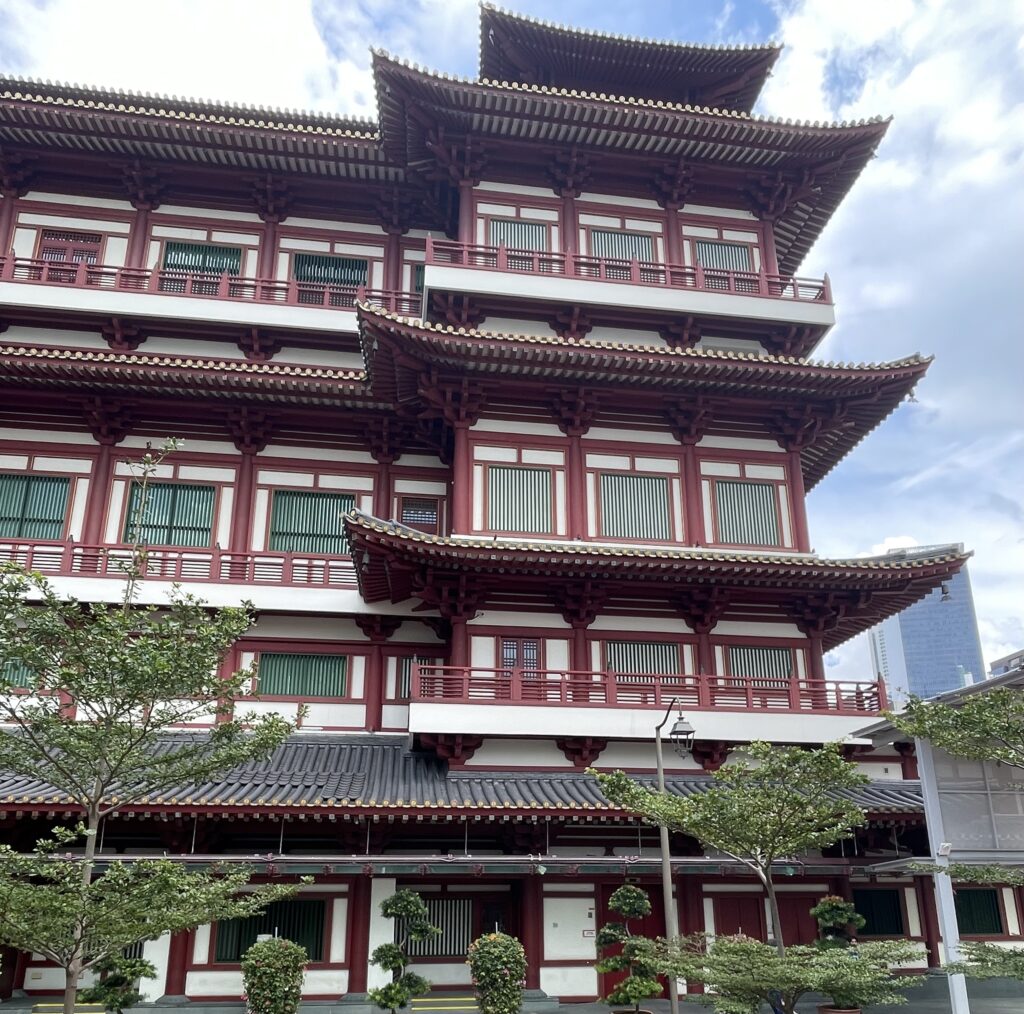
- Teahouses
While there are many venues in Singapore where one can order a decent cup of tea, there is no better place to taste the premium quality brew than an authentic Chinese-style teahouse. There are several interesting ones in the area of Chinatown – a lively district located off Downtown and within a seamless commute distance from Marina Bay.
My first has always been SILK Tea Bar (26A Sago St.), offering a peaceful atmosphere with minimalist (but not hostile) aesthetic. You may have your tea more casually selected from the menu and brewed for you. During my visit to this place I had a cup of tasteful ripe (shou) pu-erh. You may also book a tea flight session that lasts 90 minutes. From the teahouse you may enjoy a view of the nearby temple of Buddha Tooth Relic.


Yet another remarkable place to enjoy top quality tea accompanied by a small snack is Yixing Xuan Teahouse (78 Tg Pagar Rd), founded in 1989 and nowadays managed by its founder and his daughter. With its interior design being more casual than in other teahouses, the place provides what tea-savvies are looking for: a quality tea served by knowledgeable personnel. The impeccable service and level of tea education are definitely the strengths of this place, obviously apart from the quality of tea being served.
If you are looking for more traditional Chinese teahouse formula where tea is served along with snacks or proper meal, try Tea Time (茶侍, 280A South Bridge Rd). The place is famous for its good food accompanied by high quality tea, yet price-wise it tends to be on the upper side.
Tea Chapter (9 Neil Rd) teahouse founded in 1989 is an emblematic place in Chinatown. Its particular feature is the option of booking private, themed rooms in various styles, where the Korean and Japanese ones stand out. It lets you enjoy your tea in a more private space compared to most other teahouses. I definitely recommend trying out its particular experience of a more vintage teahouse (of course as per Singapore standards where teahouses are usually just over a decade-old; it’s a striking contrast with China, where some places’ tradition can be centuries old).
Tea tasting in Chinatown can be combined with a visit to Buddha Tooth Relic Temple. It is definitely worth seeing and not only because it hosts important Buddha relics. In reality, its art museum makes it one of the most interesting places to visit in Singapore for Buddhist art enthusiasts. The collection spans from Gandhara sculpture masterpieces (1st century BCE – 7th century CE) to 20th century Chinese Buddhist art.
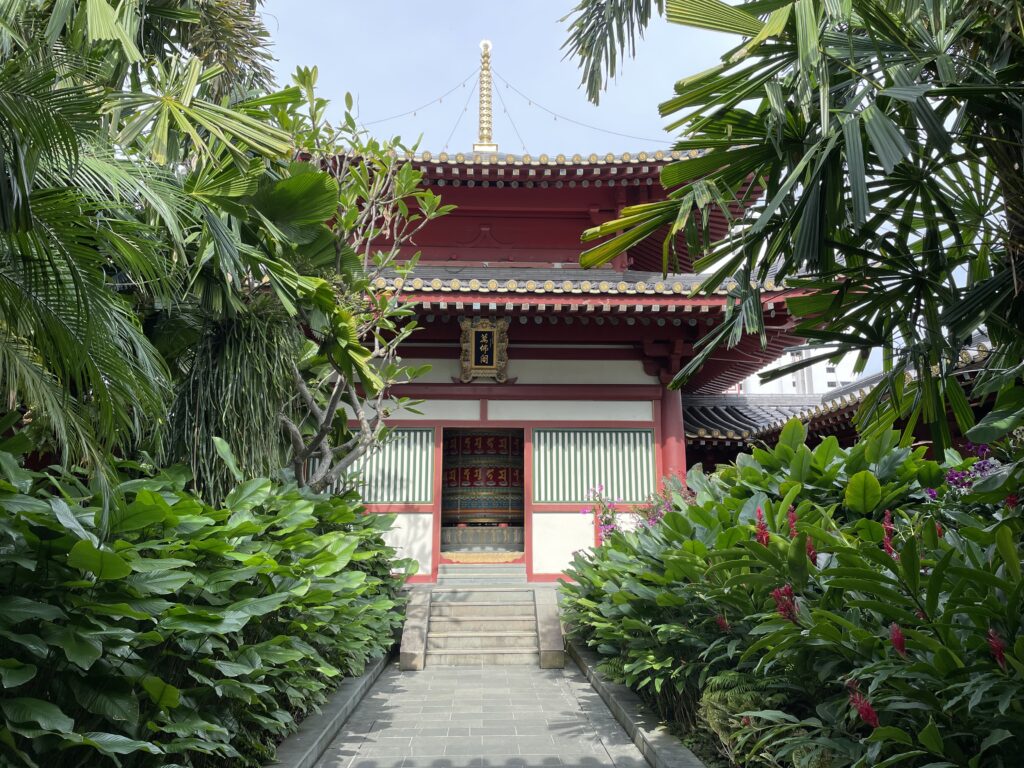
While the main temple hall may feel slightly overwhelming with its myriad of golden Buddhas and bodhisattvas statues, getting to the upper floor and seeing relics of Buddha conserved in a number of golden reliquaries is a must.
The most relaxing experience the temple has to offer is a picturesque rooftop garden with a pavilion of a gigantic prayer wheel in its centre. It is the perfect place to have a contemplative break after a nice cup of tea, or vice versa, to relax before indulging in a tea tasting.

- Places to buy tea leafs and tea accessories
Enjoy Tea (32 Sago St) is a great place to buy quality tea and teaware in Singapore. The shop’s focus is on specialty oolong teas from mainland China. The owner, Mr. Michael Teo, is keen to share his knowledge and understand customer’s preferences to advise on which tea to choose. He also conducts tea appreciation sessions that may help you discover subtleties of Chinese tea culture and help you to choose your beloved oolong tea.
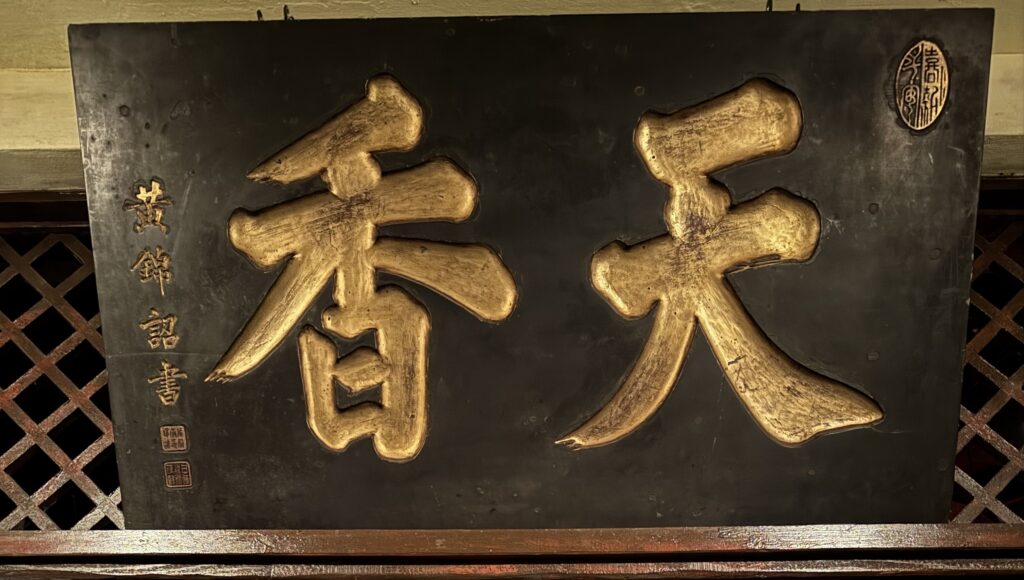
Wang San Yang Tea Merchant (王三陽茶荘, 531 Upper Cross St), a tea shop established in the 1950s is located in a quiet street behind Chinatown Point mall. It is a great place to buy quality pu-erh, some classic Chinese green tea as well as artisanal tea sets and tea accessories. The large choice of small tea pots allows you to choose your perfect teapot depending on your taste (from minimalist or ornate), purpose (literally all sizes that make sense for preparation of gongfu cha are available) and budget (yet even the cheapest pieces are quality tea pots). You will find here any imaginable type of a small clay Chinese teapot used for pu-erh brewing: from decent pieces that do their job to true pieces of art and craftsmanship usually purchased by avid teapot collectors. Even if you come from the West, while looking for a teapot in Singapore, you may be asked if you collect such tea pots, as if it was a common hobby in Europe and America.
The Orchid is a gift shop located at Pagoda street (may get busy with tourists in the evening time), not far from Sri Mariamman temple (the oldest Hindu temple in Singapore, built in 1827 and dedicated to Mother Goddess). The shop offers a variety of budget-friendly tea accessories, but you will also find some craftsman pieces and tea sets. If you step inside, there is a separate room with a decent selection of tea.
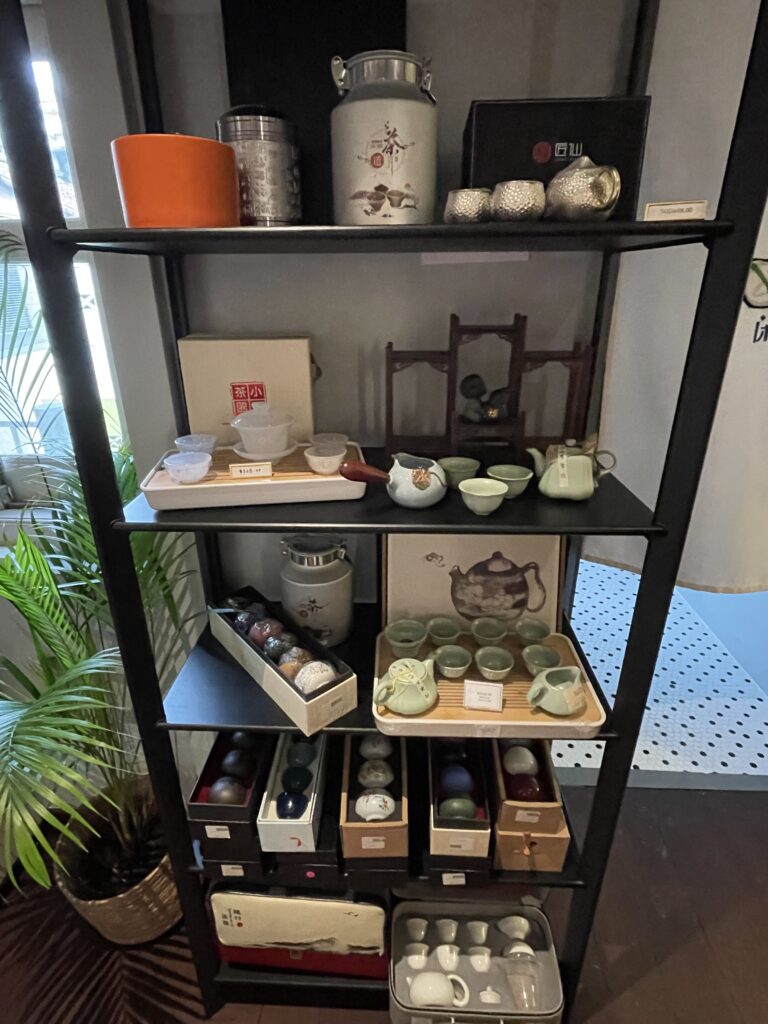
Paterson Tea House (藝匯茶行, 4 Sago Ln): this popular with locals tea shop is located next to Chinatown Complex hawker centre. It sells a wide selection of tea and teaware suitable for any budget. Their choice of pu-erh tea is impressive, but you will also find a reasonably good choice of green and white tea.
- Tea appreciation workshops
If you stay in Singapore for a bit longer, you may consider attending a tea appreciation workshop to deepen your tea knowledge and discover diverse ways of preparing a brew. Such workshops are suitable for both beginners and more advanced tea amateurs. As they are held in small groups, they are customisable according to the knowledge level of the participants. To attend a workshop, contact one of the following teahouses:
Yixing Xuan Teahouse organises well-known and popular tea-themed workshops. They are definitely among the best in Singapore. The owners’ expertise makes a tea appreciation workshop an interesting journey into Chinese culture, therapeutic effects of Chinese art of tea making as well as tea drinking benefits.
Tea Chapter is a traditional teahouse that offers popular tea appreciation workshops. You may choose one out of two standard experience packages, but if you need to accommodate a bigger group or have any special requirements, the workshops are adaptable to your needs.
Hopefully this overview of my favourite tea spots in Singapore will help you explore its tea scene and benefit from city-state’s diverse tea culture heritage.
